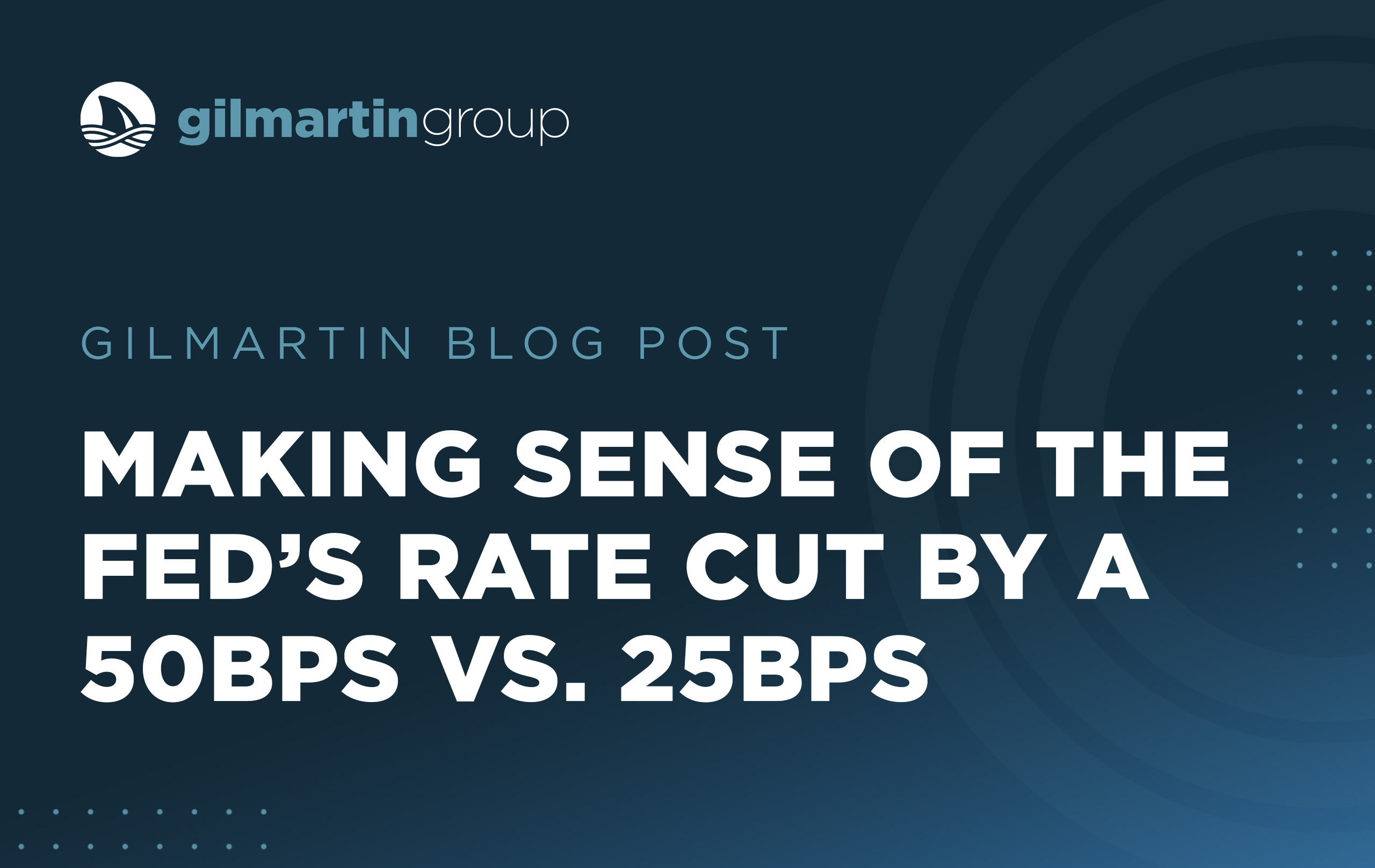What Happened?
In its much-awaited first rate cut of the post-pandemic economic cycle, the FOMC cut the Fed Funds target rate by 50 bps to a range of 4.75%–5.00%. Prior to Wednesday, markets had all but priced in the decision to cut, but the controversy was whether to cut 25 or 50 bps, with the market almost perfectly split 50:50 in anticipation of the two outcomes. Ultimately, The Fed opted for a more aggressive start to the cutting cycle, reducing rates by 50bps. Following the decision, Chair Powell characterized the move as “a good strong start” and that the risks of achieving its employment and inflation “goals were roughly in balance.”
Chair Powell highlighted that the 50 bps reduction does not reflect a belief that the committee is behind the curve and alternatively in the press conference, Powell emphasized that the cut was designed to “recalibrate our policy”. The chairman specifically highlighted “the economy is in a good place and our intention is to maintain the strength that we currently see in the economy, and we will do that by returning rates from the high level to a more normal level over time.” This language supports our view that this action should be viewed as a “recalibration” away from its prior restrictive policy rather than something that is designed to stimulate the economy. It’s less pressure (stepping off) on the brakes vs. pushing on the accelerator.
Putting it in perspective and What Next
We believe this greatly anticipated move away from restrictive policy will be favorable for equities and capital markets; although additional volatility is inevitable as we inch closer to the US Presidential Election in November.
The FOMC will continue to make decisions meeting by meeting, the timing and pace of rate cuts will depend on incoming data, the evolving outlook, the balance of risks, and referred to the Summary of Economic Projections (SEP) for guidance about the baseline policy rate path.
The Fed’s dot plot, and Chair Powell’s remarks both suggest that the committee does not feel particular urgency to cut rates aggressively despite the 50 bps cut on Wednesday. The median dot suggests that 25 bps cuts are likely at each of the Fed’s next two meetings, followed by quarterly 25 bps cuts thereafter with the policy rate not returning to the Fed’s estimate of neutral until early 2026.
Its other forecasts remain optimistic, with GDP growing by approximately 2% p.a. for each of the next four years and the unemployment rate stabilizing at 4.4%. If the FOMC is right, in that they can normalize growth and the labor market around these levels, then they’ll be right to move slowly with interest rates in the future.
Chair Powell indicated that the Fed has been rewarded for patience during this cycle which guides their sense of how to proceed from here. He said repeatedly that “there is no sense that the committee is in a rush” to get to neutral. They remain data dependent but not data point dependent: they are not going to respond to every data release but to the evolution of the data over time, as they have done to good effect for the last several quarters.
Gilmartin Group has extensive experience working with both private and public companies across the LSTDx, MedTech, Biotech and Digital Health spaces. To find out more about how we strategically partner with our clients, please contact our team today.
Authored by: David Holmes, Managing Director, Gilmartin Group

